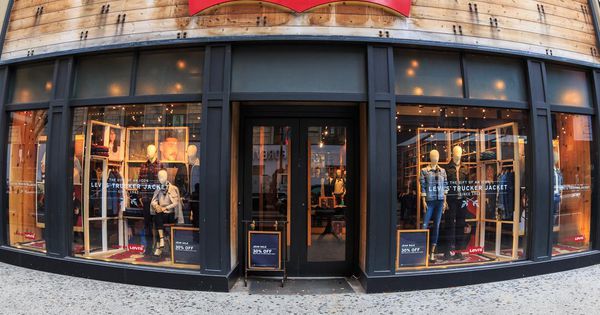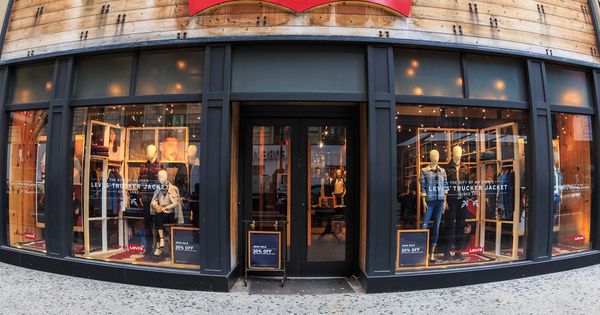
In March, I attended Shoptalk – one of the largest retail conferences in the country – and much of the conversation there focused on digital-first strategies for bridging physical and digital retail, such as buy-online-pickup-in-store.
I have a different take on many of these strategies. First, it’s not a question of digital first or digital last. A prioritized focus on digital is table stakes, yet many companies are too limited and misguided in their approach, meaning they’re leaving revenue opportunities untapped.
Digital is a frontier that retailers need to conquer if they plan to stay relevant, attract new audiences, and convert visitors into buyers. It’s not about a digital-first approach; it’s about having a holistic and strategic approach for the entire customer journey. Customers are coming from all directions and channels, and digital experiences happen within physical stores and within the digital arena, irrespective of where the shopping journey started. So, it’s not enough to focus on an online store. Inspiration and engagement within the shopping journey comes from many places.
Levi’s, Target, and Allbirds are just a few of the retailers that are winning by going beyond standard digital-first efforts. Here, I share a few insights and myths about digital strategies and how retailers should be thinking more holistically about them.
- What “having a digital presence” should really mean
When thinking about how to meet customers’ needs on digital channels, retailers have to be more sophisticated. Just having your content in a digital format and creating basic personalized identities isn’t enough. Modern customers expect a more comprehensive personalized experience, where context, intent, and channels come into play.
Commerce is still very much a transactional experience. Consumers are demanding something more social and emotional, but the majority of talking points I’ve heard on the subject are still very tactical and technical. Topics like re-platforming, mobile capabilities, payment methods, coupons, and marketing programs are table stakes and shouldn’t be considered part of the evolution the industry is facing to meet new consumer expectations. Having a digital presence can’t just be something retailers say they’re working on to check a box. Being present digitally means adding value to consumers in new and unexpected ways. Just being there is more likely to be interruptive instead of beneficial.
- Retailers are neglecting digital experiences.
We often talk about how quickly digital commerce is growing, although roughly 90% of commerce still happens in the physical world. While much of the industry is celebrating the new and improved in-store experiences, digital experience innovation is still in its infancy. Few retailers have really focused on the consumer experience online, and the ones that haven’t are missing an opportunity to convert huge numbers of visitors into loyal customers. These companies tend to offer only static products and uninspired storefronts on their digital channels.
Levi’s is one retailer that has reimagined its digital offering as an immersive customer experience. When Levi’s opened its largest flagship store to date, in New York City’s Times Square, it piloted a 360-degree, 3-D, shoppable store experience on its website. By clicking on hot spots, consumers were able to purchase the products they saw and learn more about each area of the store as they took a virtual tour.
Levi’s NYC flagship store in Times Square.
Shutterstock
In general, experiences are traditionally thought of as non-tangible goods. While that’s true, digital innovation can make buying, delivering and accepting products online just as memorable. And that’s a real differentiator because so few retailers are focusing on making online shopping experiential. If the number of people visiting a retailer’s website every day were walking into a physical store instead, the retailer would do everything it could to give those shoppers a unique experience. So, why aren’t retailers holding their online shopping experience to the same standard?
In the age of digital innovation through technology, retailers can use technology to evolve their online store and standard merchandise into a digital shopping experience. From augmented reality, gamification, social media integration, and new ways to deliver these purchased items, retail has the opportunity to provide digital hot spots for purchasing and simplifying navigation with longer-term strategies for incorporating more advanced technologies.
- Buy-online-pickup-in-store is a digital-last fulfillment
Buy-online-pickup-in-store (BOPIS) was, surprisingly, a big topic of discussion at Shoptalk and the service has resurfaced as a point of focus over the past year. BOPIS might be considered a digital-first strategy, as it serves customers’ intentions to begin their shopping journey online, but, in terms of fulfillment, it’s a digital-last option because it comes at the end of the customer journey after the purchase decision.
I’d like to call it for what it is: BOPIS is a method to accommodate the need for better fulfillment and quick delivery of goods, and an important one to implement when possible and applicable – but, it assumes people converted. For most retailers, the average site-purchase conversion rate is 2-3% according to Monetate, which means BOPIS doesn’t impact the 97% of consumers on any given day. There are a number of reasons BOPIS service may not convert shoppers: they may not be able to drive to the nearby store to pick up a product, they may want to touch and examine an item before shopping for it online, or they may be buying the product for someone else remotely.
Retailers should focus on the top of the funnel, where the mass market opportunity lies, and identify ways to attract and convert new users that are landing on their digital stores. Many retailers fail to acknowledge that BOPIS is not helping with the mass opportunity at top of the funnel – it’s only solving digital first for a small segment of shoppers who have already made a purchase.
- Retailers are missing out on the revenue-producing power of social media.
Forrester Research says over 70% of consumers trust recommendations from friends, and e-commerce fulfillment company Red Stag Fulfillment has found that 84% of online shoppers review at least one social media site before making a purchase. The truth is that modern shoppers get firsthand recommendations in person but see significantly more secondhand recommendations on social media sites. Successful retailers are thinking about creative ways to drive not only engagement with their brand on social media but also revenue on each platform. Digitally native brands are leading the way in terms of using social media to contribute to their bottom line.
Allbirds is one example of a digitally native retail startup that effectively uses social media to build brand awareness and generate purchases. For example, the sneakers brand celebrated its second birthday in March 2018 by promoting its limited-edition Confetti shoe collection exclusively on Instagram Stories.
To sum this up – retail’s current definition of digital first is already behind. Checking boxes on digital brings you to the table but doesn’t always help you win. If my time at Shoptalk revealed anything, it’s that the buzzword might be setting a standard that we should already be pushing beyond. Good retailers in the future will view digital and physical on the same plane. The best will let digital lead the way as they realize the opportunity they have to impact more consumers than ever. Digital first in its current state is digital last. Let’s push the envelope to create the best possible human experiences in the places where those humans are existing most often.

